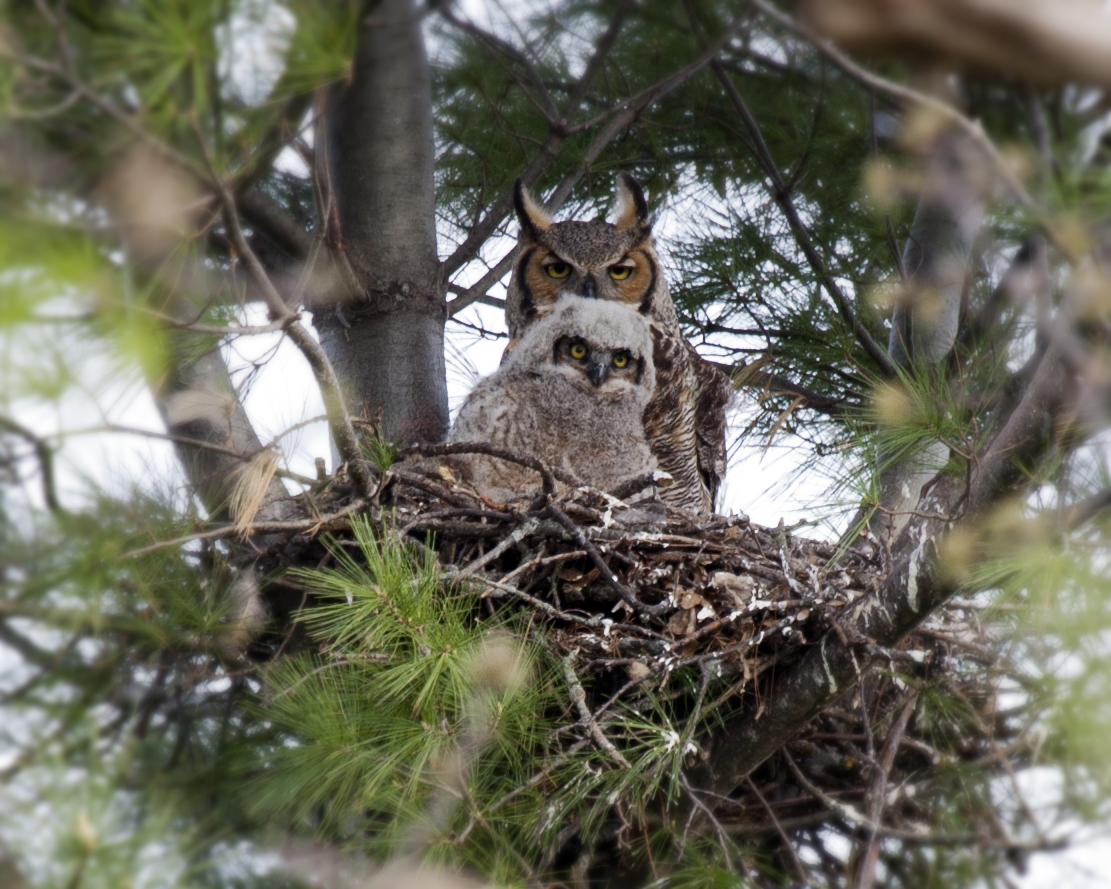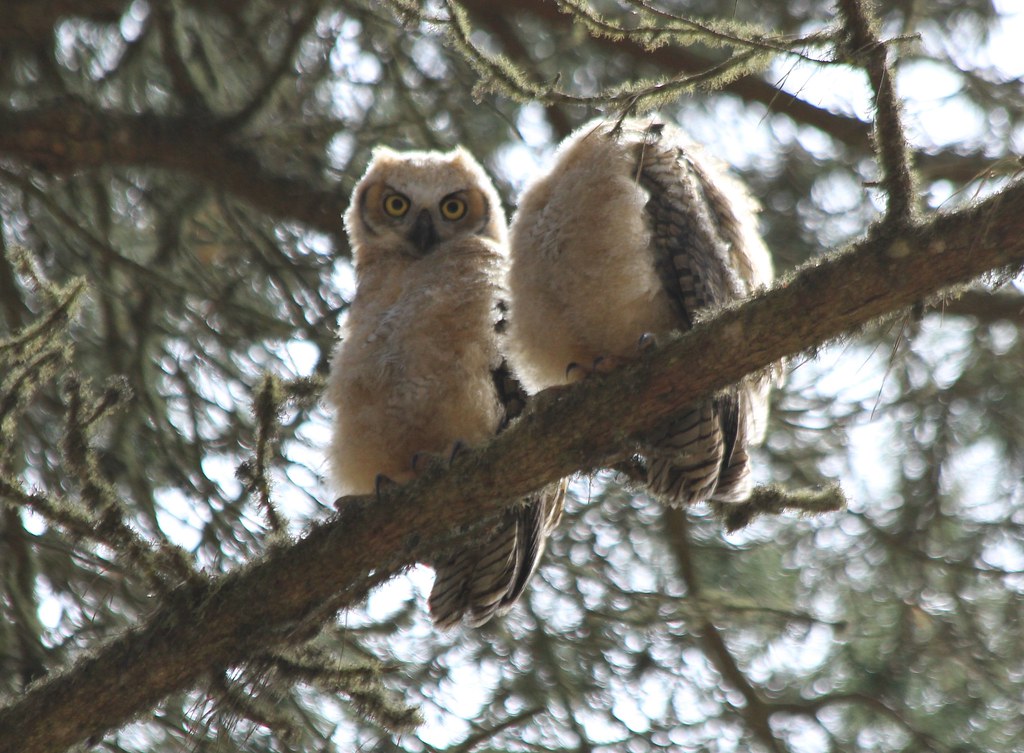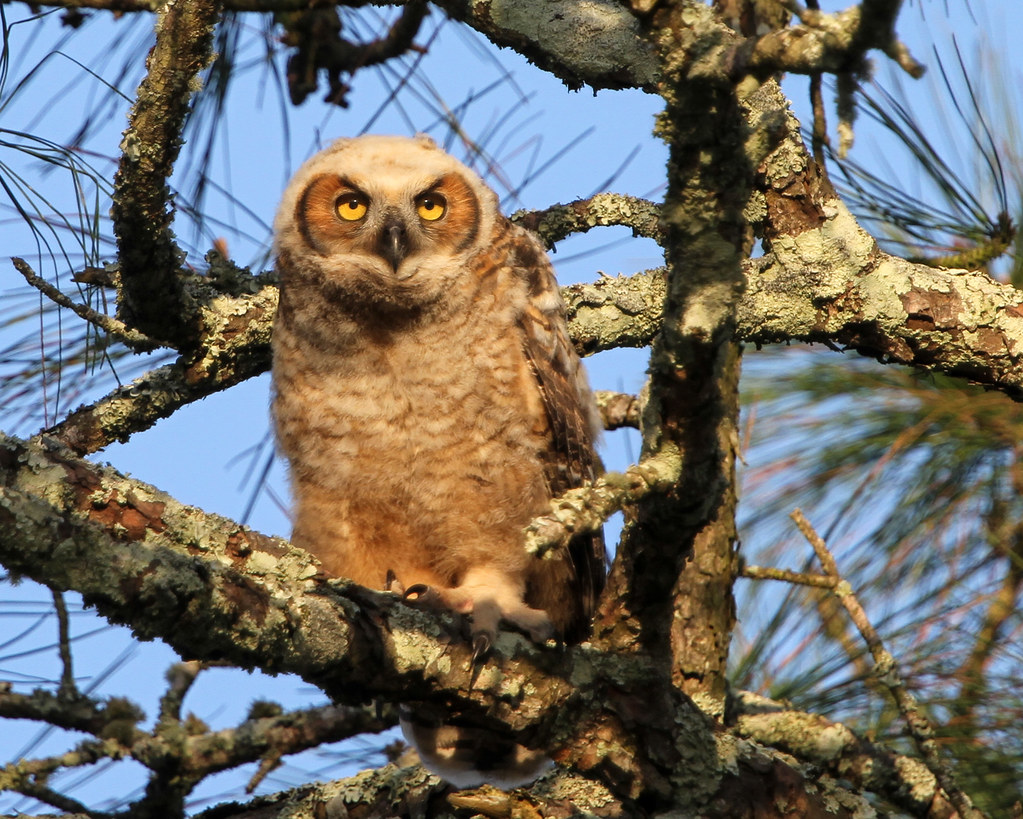Post contributed by Maggie, seasonal Natural Resources Technician:
It’s my favorite time of the year! It’s the time of
year that you can expect to hear Great Horned Owls (Bubo virginianus)
beginning their nesting season. Great Horned Owls (GHO) are one of the most
common owls in North America, and can coexist very closely with humans in the
city. They are not only one of the earliest nesting birds in
Minnesota, but also in the Americas. Usually by this time of the year (January-February),
the male owl has established his territory and found his mate.
 |
| GHOs have great camouflage! |
Male and females begin their mating rituals by calling
to one another once they have found a nesting location. If you listen
closely to their calls, you can easily distinguish between the male and female:
the male has a much lower pitched voice than the female does. It’s also
thought that female Great Horned Owls only call during the mating and nesting
seasons.
 |
| Adult & Juvenile in nest |
Great horned owl pairs keep the same territories
year-to-year, and mate for life. Great Horned Owls are found in so many
different habitats that their nests can be very diverse. They don’t
usually make their own – instead, they adopt other large birds’ nests, nest in
live tree cavities, snags, or in human-constructed nest boxes. Great
Horned Owls have even been known to make their nests on the ground in parts of
the prairies of Canada and the Western US.
The female owl will usually lay 3 eggs, but can lay up to 5
depending on the year and prevalence of food. She lays one per day and
begins incubating the eggs as soon as they’re laid. The female doesn’t
leave the nest for long periods of time due to the cold weather during the
incubation period, and is brought food by the male. Eggs are incubated for a
period of 30-37 days. Similar to other raptors, the owlets often hatch on
different days and there is usually a noticeable size difference amongst
them. Typical broods of Great Horneds in our area include 1 to 2
fledglings, but I’ve seen up to 3 survive during a good food year! Once
the owlets have hatched, the female and male take turns catching prey for their
young. The female owl usually stays in the nest when she’s not hunting,
and the male can often be seen perched nearby.
 |
| fledglings |
The owlets begin branching (leaving the nest and testing
their wing feathers) within 6-9 weeks. During this period, the adults
will still bring food to the fledglings, but after a few months, the new owls
are on their own! They will stick around their parents’ territory for the
summer, but then need to find their own territory. When they reach 2 years of age, they will begin mating.
Keep watch for signs of this common, yet well camouflaged
and hard to spot bird in our parks! Common signs of an owl nearby are
very vocal groups of crows, whitewash on trees (the droppings often left behind
on favorite perches of raptors) and agitated songbirds -- maybe if you’re lucky
you’ll hear them calling and be able to spot one!
Check out this page for more owl vocalizations and other info about GHOs!
